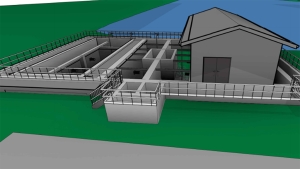The Workplace Hazardous Materials Information System (WHMIS) has been in place since 1988, classifying hazardous products in the workplace and training workers to recognize and interpret safety data.
WHMIS training essential in construction safety
TORONTO
The Workplace Hazardous Materials Information System (WHMIS) has been in place since 1988, classifying hazardous products in the workplace and training workers to recognize and interpret safety data.
Construction workers require WHMIS training certificates to enter a job site. But is the construction industry keeping up with WHMIS training requirements?
“There’s still a need for WHMIS training, for both upgrades as well as new people coming into the industry,” says Carlos Figueira, Special Projects Co-ordinator with the Construction Safety Association of Ontario (CSAO).
“There’s nothing specific in the legislation as far as what’s required for uptraining and reviews, but as chemicals and processes change, there should be reviews in consultation with the joint health and safety committee, if there’s one in place.”
Figueira says that some new workers share a misconception about WHMIS.
“They think you have to work in Chemical Valley to be affected by the types of chemicals covered by WHMIS. But WHMIS includes very common products like concrete, caulking, adhesives, paint and solvents.”
Bill Arthur, a health and safety trainer for the Greater Toronto Area with Battlefield Equipment agrees.
“I try to make WHMIS training relevant by focusing on typical materials. Almost every construction worker uses concrete. I tell them that cutting concrete creates silica dust.
“When I compare silica to asbestos, their eyes open.”
To some degree, training demand is driven by enforcement, says Figueira.
When inspectors crack down, more people are trained.
“It’s like wearing seat belts. Even people who don’t recognize the value of a seat belt will wear one if there are spot checks.”
Arthur says that many clients require just-in-time training.
“When I’m called, it’s usually because WHMIS training has gone to the back burner.
“A lot of my business involves requests to put a presentation together in a couple of days because someone tells me ‘I need the WHMIS training right away, because I’m starting a job next week—otherwise the Ministry of Labour won’t allow my workers on the construction site.’”
But training needs to be reinforced by employers on-site, says Arthur.
“You can go to any construction office and see the WHMIS binder, but the construction site may tell a different story—people mixing concrete without PPE, for example.
“Workers will be trained and certified but not necessarily taking the training seriously.”
WHMIS history
WHMIS was established in 1988 as a cross-Canada communication program that identified hazardous workplace substances with classification labels that pointed to the type of hazard the product represented.
• Manufacturers were required to label these products, and to provide an accompanying Material Safety Data Sheet (MSDS) describing safe use and handling procedures. Employers were required to ensure that the labels remained with the product, to train workers in WHMIS essentials, and to provide access to MSDSs. WHMIS continues to be updated through a consensus of government, labour and industry representatives.
Source: Canadian Press










Recent Comments
comments for this post are closed